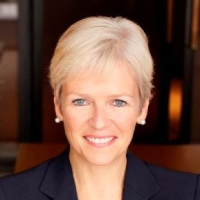
Directors’ Q&A: boards and ESG
Featuring

Colleen Johnston

Lorraine Mitchelmore
With
Boards in Canada are increasingly being called on to address the diverse range of issues that fall under the ESG umbrella. In this Q&A, co-head of our Capital Markets Practice, Rima Ramchandani, discusses key issues relating to board oversight of ESG with two preeminent Canadian directors, Colleen Johnston and Lorraine Mitchelmore.
Rima: ESG is often equated with the emergence of “stakeholder capitalism”—a focus more broadly on the interests of all stakeholders of a company, and not just shareholders. From a Canadian perspective, where directors have a duty to act in the best interests of the corporation, not limited to shareholders, do you think this is a new concept? Do you think the increasing focus on ESG has broadened the scope of your duties as a director?
Colleen: I don’t think stakeholder capitalism is a new concept at all—legally or in terms of governance leadership. I think back to the Peter Dey report on governance from 1994, which was quite groundbreaking at the time, which talked about the responsibilities of directors to consider stakeholders beyond shareholders. I also think of the triple bottom line of “people, profit and the planet”, which is certainly not a novel concept. And I believe in that. There are some directors that believe more strongly in shareholder primacy. But to me, it’s important to focus on all dimensions of performance—the short, medium and the longer term—and apply a broad definition of success. I remember somebody once asked the prior CEO of TD, Ed Clark, “What do you want us to focus on, the short term or the medium term?” And his answer was “yes”. I think that’s how the best companies and the best boards look at their role and look at the world.
Lorraine: Stakeholder capitalism is something that’s been around forever. If you look back at good companies that are sustainable, lasting multiple decades or longer and see what they did to be successful, ESG (or CSR) was always embedded in how they operated. What has happened in the last five years or so is the velocity of ESG: more companies are now looking at their strategy through the lens of an ESG framework. And the companies that had always been doing so will hopefully now be rewarded.
What we’re also seeing is that ESG is now becoming a product. The “ESG brand” in some ways reflects a lack of understanding of the fundamentals of how a company operates. Every sector and every company within that sector is going to have different measurements in how they embed ESG factors in their strategy—it’s not a one-size-fits-all approach. I think things will come together once we get our standards of measurements right and companies continue to focus on embedding ESG into their strategy. Is a director’s job any different? I don’t think so. I think the expectation has always been there.
Rima: There has been a growing ESG backlash, particularly in the U.S. where the topic of climate change for instance is highly politicized. Some critics claim that the ESG agenda is causing boards to take their focus away from company financial performance and shareholder returns. Are you seeing that?
Colleen: Not at all. I’ve been retired from TD for five years, but when I think of my time as CFO, the bank delivered industry-leading financial performance while also being the only Canadian bank on the Dow Jones Sustainability Index. Profit and ESG weren’t mutually exclusive. TD was—and is—the leader in terms of corporate social responsibility and that’s accretive to TD’s brand with customers, employees and the community. And my experience with most other organizations is the same. While very committed to ESG leadership, the dominant measure of success and the driver of compensation is still financial performance. I have not experienced nor heard of companies where they’ve put financial performance on the back burner in favor of ESG. I have never heard of that. And I think what you’re seeing now in terms of some of the public backlash in response to ESG, especially in the U.S., it may make good politics, but I don’t think it’s good risk management.
Lorraine: The ultimate outcome is always financial performance, but how you optimize financial performance is to think more broadly, including about the interests of all of your stakeholders. You also have to think about the opportunities and how those can drive financial performance—for example, climate change creates risk but it also creates significant opportunities. And when I think about the “S” in ESG, and diversity, equity and inclusion (or DEI) in particular, DEI is about being focused on optimizing talent strategies. Strong talent management needs to be part of any shareholder value creation strategy. Diversity is ultimately the outcome of good talent management and inclusion strategies. So I think what ESG has done is put a framework around how good companies are already thinking about their strategies and key stakeholders. Some companies, if they’re thinking about ESG as a product, they might be taking their eye off the ball. But if a company is embedding ESG in its strategy and processes, financial performance and value creation are always at the forefront.
Rima: When you're thinking about joining a board, how do you assess the company’s performance on ESG-related matters?
Colleen: You want to learn as much as you can about management and the board and how they look at the world. You want to make sure you’re compatible. And I tend to believe that a focus on ESG is a sign of enlightened leadership on the part of a board and management team: I’m not that interested in being part of an organization that’s focused solely on the short term. So I make reviewing their reporting part of my due diligence. And you may say “Everybody can put a shiny ESG report together. Does it really tell you that much?” But you know, because of my deep experience in investor relations at TD, I’ve been asked to be a judge for the last number of years for the Canadian Investor Relations awards, where the best ESG reporting for small-, medium- and large-cap companies is assessed. You can tell a lot about a company’s commitment to ESG based on their disclosures, their narratives on the topic and the degree of integration between ESG and financial reporting—not only in terms of what they publish, but also how they talk about performance. There are lots of indicators in terms of how a company conducts itself to reflect that ESG and corporate social responsibility aren’t just off to the side, it’s more integrated in the story. In talking to management, you can also get a good sense of a company’s level of commitment.
Lorraine: Having worked at Shell for many years, a similar version of the triple bottom line that Colleen referred to of “people, profit and planet” was integrated into how we made decisions. And, having spent my career in the oil and gas sector, that certainly is a value set for me. When I look at a company or its board, I look at how they create shareholder value. The key to that is looking at their metrics: what are they measuring, what is unique to them, how are they competing, what do they care about? I look at the narrative in their proxy and think about the story they are trying to tell, whether they are just doing “vanilla” reporting or whether they are taking ESG seriously. I also look at how they are ranked by third parties. So I look at all of these things to find out what the values of the corporation are, their culture and how the company lives its purpose.
Rima: What are your views on the rising influence of proxy advisory firms in the Canadian market and their attempts to hold directors accountable by recommending withholding votes, including for a lack of board diversity?
Colleen: The power of investors in the governance process is quite profound and companies take it very seriously. I’ll share an example from back in my early days as CFO of TD, about 15 years ago. Each year, there were shareholder proposals related to female representation on the board and in management. And, at the time, those basically got zero traction. All of that has changed now that investors have pressed the issue. While I agree that proxy advisors have an important role, I do have concerns about that role. In my opinion, the best approach is for management and the board to engage directly with investors during proxy season to understand each other’s position. In many cases, investors will make shareholder proposals, some of which will be withdrawn based on the quality of the response and agreement on direction. That has proven to get better results over time.
Recommending withholding votes is fraught with issues, and it puts a lot of faith in proxy advisory firms. How much of that dialogue has happened before those recommendations are being made? It can be hard for investors not to vote in line with advisor recommendations. There is a lot of very hard work that goes into getting the right mix of board members with the right depth of experience. Voting directors down can be a dangerous practice, except in rare circumstances.
Lorraine: I have no problem with board accountability, but I too worry about a lack of understanding. I would want to make sure that before proxy advisory firms recommend withhold votes that they have a real understanding, they have engaged with directors and understand the goals, targets and challenges of the company, and have a clear sense of how the company is working its way through the particular issue—ESG or otherwise—to make an informed recommendation.
Rima: What role do you think companies can and should play in addressing social concerns, such as racial inequity? Is this the board’s responsibility?
Colleen: When it comes to issues like racial inequity, I don’t think of it as just a social concern or outside of the purview of a board and management: it’s a business issue, being frank about it. If you look at Canada’s population, we’re a very diverse country. So first and foremost, companies need to get their own houses in order and ensure a diverse and inclusive workplace. Leading by example is important. This is not just a social cause: this is about attracting and retaining the very best people—so board leadership on DEI is very important. And I think corporate leaders also have a significant influence and impact on society. Those same organizations that have diverse workforces, they have many employees who are impacted deeply when world events occur. You think about the hurt that is created, for example, in some of the high-profile cases we hear about of racial inequity. Taking a stand publicly on these issues is important because it communicates your values—not just to the broader public, but also to your employees.
Being a good corporate citizen and a leader challenges you to have a view on those things that are well beyond social issues. Many argue that it’s at your peril, that taking a stand could yield some backlash. It takes courage and it takes leadership.
Lorraine: Companies exist within a society, and I think they have a huge opportunity to address racial inequity. There are historically disadvantaged groups that companies can reach through the community, through philanthropy, through education. I’ll give you an example with Shell. We wanted to partner with an Indigenous-led company that didn’t have robust health, safety and environmental systems in place. So we decided to train them on these systems and then make that company part of our supply chain. That is a good example of operating in a way that advances equity by facilitating another company’s capacity to be able to compete. Having a robust talent management strategy that is focused on DEI, as I mentioned, is another example of how companies can and should address social inequities. And all of these activities are certainly part of the board’s responsibility to make sure the company is attracting and retaining the best people and the company is using all of the tools at its disposal to achieve the best results.
Rima: “Say-on-climate” votes—non-binding shareholder advisory votes, similar to say-on-pay, where shareholders are asked to vote annually on a company’s climate transition plan—are a relatively new development in the capital markets. They haven’t taken off yet in Canada but are getting attention globally. What's your view on say-on-climate?
Lorraine: Climate change, as we all know, is an existential threat. It is also complex and it is global. The biggest issue I have with say-on-climate is whether there is sufficient understanding of this complexity. For example, with fossil fuels, there are significant capital allocation plans driving emissions reductions. Who is it benefitting by asking investors to divest from these companies? We still need fossil fuels for the majority of the energy system. However, if investors partner with these companies and help them decarbonize, then it has a positive impact on emissions. This is a big, complex topic and a say-on-climate advisory vote can’t really get at that complexity. And the most important thing is it abdicates the responsibility of the board. The board has all of the relevant information. They are making all kinds of decisions and tradeoffs and, as I said earlier, ESG is embedded in the company’s strategy and how it creates shareholder value. Shareholders simply do not have all that information in order to make an informed vote. It’s important to explain to shareholders how the company is embedding decarbonization into its strategy, and every sector is going to have different tools and mechanisms to do that. But this is a complex issue and ultimately part of a board’s oversight responsibility.
Colleen: I think say-on-climate votes are premature. What we’re currently focused on is getting to the right standards and the right level of literacy out there, ensuring we are all on the same page before establishing a point of view. So I think it would be premature and disruptive to go down this road. I just don't think anything’s at that level of maturity yet.
Rima: Many Canadian companies—including all of the major financial institutions—have set net zero targets by 2050. As a director, how do you get comfortable setting long-term targets which are subject to many variables that are often difficult to predict?
Lorraine: The majority of countries have set net zero targets. It’s a global challenge requiring a global solution. Companies have to rally behind a target to be able to really make an impact. So net zero by 2050 is a galvanizing target. You get comfortable as a director having a long-term goal, by making short- and medium-term goals. They are required to allow you to navigate progress and adapt along the way to different external events while staying focused on the long term. For example, the war in Ukraine immediately impacted energy security which has become front and center now, but ESG and climate change didn’t just go away because of that event. Goals and a clear roadmap, matched with capital allocation are critical. In my world—the energy space—30 years is not a long timeframe, so you’d better be working on it now. And for the companies where I serve as a director, it is an important part of the strategy.
Colleen: I haven’t been as deeply involved in recent years in those targets. And I’m sure the banks and other large companies are doing a really good job with it and I applaud their efforts to put a stake in the ground. When it comes to net zero targets by 2050, I think that shows strong commitment. But when you look at it in a practical sense, these very long-dated commitments with many variables, while well-intentioned, are set by boards and management teams that won’t be around in 2050. The key is to set those long-dated commitments, but have a road map for the shorter-term goals and with a clear sense of whether progress is on track. I think that is a credible approach. But when you’re looking at something that’s 27 years down the road...
Rima: ...It’s aspirational.
Colleen: That’s a good way to put it. It’s aspirational. I heard a very eminent CEO speak recently in a private session and he was asked about whether companies collectively can combat climate change, and he was pessimistic. He doesn’t think humankind can solve the problem. I hope he’s wrong. I hope he’s wrong for the sake of future generations. But governments have to come to the table as well. There’s a tremendous amount of pressure on corporations right now for all the reasons we’ve talked about, and investor pressure. But governments are a vital part of this equation; there are many organizations that have to come to the table.
Rima: What advice would you give to directors about how to get smart and exercise proper board oversight on ESG?
Colleen: I would say, first of all, make ESG a part of your strategy, not an adjunct, not a separate thing that you do. Set the ESG agenda in relation to what makes sense for the organization. Don’t go through the motions but really decide what defines your future success and a statement of values for you as an organization: what’s important and what’s going to move the dial for your organization in the short-, medium- and longer-term and integrate that fully with your strategy. One of the companies I’m part of has essentially split the ESG oversight responsibilities between two committees: a Safety and Sustainability Committee, and the Audit Committee, both having a very vital role to play in this particular company. The strategy piece of this sits with the Safety and Sustainability Committee, but the assurance element is going to be the purview of the Audit Committee. Not only do we need to set those true reliable measures, but we also need to think about what that’s going to cost in terms of management time and external audit verification.
And decide where you want to be on the spectrum: some companies want to be ahead of the curve, others may want to be right on the curve, and some are probably lagging a bit. So decide where you want to be, get expert help, have a road map and clear alignment between the board and management.
Boards also have to ask tough questions to make sure that their organization remains competitive. We can’t say “I’ll just do what everybody else is doing”. That’s what governments grapple with as well—how far do you go in terms of requirements, especially on climate change, and how does that stack up against international practice? We don’t want to disadvantage Canada on the global stage. We want to be a progressive country. So I think that’s the same with companies. You’ve got to assess where you want to be on that spectrum and understanding those competitive implications is really important.
Lorraine: Good companies do a lot of work to educate their directors on what’s coming next. Directors also need to proactively think about these things and there is no shortage of resources for directors to seek out this information. I don’t believe in having ESG-specific committees. I think each committee in a company needs to have ESG integrated into it. The key to exercising proper ESG oversight is to live by your purpose, live by your company’s principles and consider how the company exists in society. Society keeps changing. As we move forward, companies can’t deliver shareholder value if they’re not in lockstep with society.
Colleen Johnston is the former Chief Financial Officer of Toronto-Dominion Bank. Prior to her retirement in 2018 Colleen spent 14 years at TD, 10 of which she spent as Group Head, Finance, Sourcing, Corporate Communications and Chief Financial Officer. Prior to TD, Ms. Johnston held senior leadership roles at Scotiabank over the course of 15 years, including as CFO of Scotia Capital. Ms. Johnston currently serves on the board of directors of Shopify Inc. and Q4, as well as a number of private companies and non-profits, including as Chair of the Unity Health Toronto board of directors.
Lorraine Mitchelmore is a leader in the oil and gas sector with over 30 years of international industry experience. Since her retirement from Shell Canada as President and Country Chair and EVP for Royal Dutch Shell’s America heavy oil business, she has acted as a national advocate for Canada to develop climate and innovation policies that will position the industry as a leading responsible developer globally. She is an active mentor to a number of technology start-ups and women executives. She serves on the board of directors of Bank of Montreal, Suncor Energy, Cheniere Energy and Aimco. She is the co-founder and co-chair of Smart Prosperity and in 2018 chaired the federal government’s Resource of the Future Economic Strategy Table.
To discuss these issues, please contact the author(s).
This publication is a general discussion of certain legal and related developments and should not be relied upon as legal advice. If you require legal advice, we would be pleased to discuss the issues in this publication with you, in the context of your particular circumstances.
For permission to republish this or any other publication, contact Janelle Weed.
© 2026 by Torys LLP.
All rights reserved.
